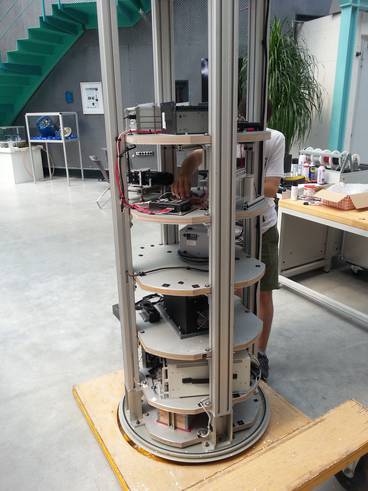Bubble management by means of acoustics (BMA)

research area: fluid dynamics
experiment title:
Bubble Management by Means of Acoustics
experiment acronym: BMA
funding agency: ESA
grant number: CORA - Program
performing organization:
Department of Applied Physics, Universitat Politècnica de Catalunya-BarcelonaTech, Spain
prime investigator:
Prof. Dr. Ricard González-Cinca
experiment objective
abstract
The aim of this proposal is to conduct a systematic investigation of the control of bubbles generated by boiling by means of acoustic waves. An experimental setup previously tested at the Laboratory of Microgravity (UPC-BarcelonaTech) and in two sounding rocket flights (one in the NASA Flight Opportunities Programme and one REXUS ESA Education) will be modified to adapt to the ZARM drop tower requirements. Boiling will be generated in a test cell by means of two heaters. A piezoelectric transducer will generate an acoustic wave in the liquid that will apply a force on the vapor bubbles. Information on the detachment, dynamics and distribution of bubbles will be obtained from the videos recorded with a high- speed camera.
The detachment of bubbles from the heater and their subsequent dynamics are very dependent on the gravity level. When the acoustic field is applied to the system in microgravity, the acoustic force could replace gravity to detach the bubbles. Moreover, the dynamics of bubbles in weightlessness is fully determined by the acoustic force too. In the case of a standing acoustic wave, bubbles are directed towards the nodes or the antinodes of the wave depending on their size. Therefore, we expect to control the bubble detachment and dynamics by means of the acoustic wave under different configurations. The main parameters that characterize each experimental configuration are: heater power, acoustic wave amplitude, frequency and direction.
A set of drops is requested to analyze the different experimental configurations. The results obtained will allow us to gain further understanding in the bubble management in microgravity. In addition, we will continue the maturation of a technology that could be used for applications such as propellant boil-off mitigation or electronic cooling.
experiment campaigns
experiment year: 2020
number of drops: 15
experiment year: 2018
number of drops: 15


 "
"